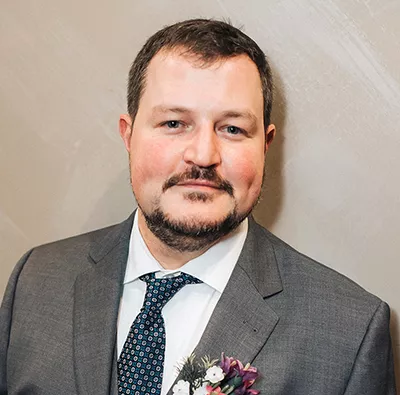Charles “Chuck” Ronco, a math teacher at Stonewall Jackson High School in Prince William County, Virginia, recalls that he was catching up on the news during his lunch break last spring when he read a chilling article about a mass shooting suspect in New Zealand who flashed a “white power” sign in court.
The man is accused of carrying out shootings at two mosques in Christchurch, New Zealand, on March 15, 2019, that left 51 people dead and 49 wounded. (At press time, his trial was set to begin in June.)

Ronco and his colleagues had recently been briefed by their school resource officer to be on the lookout for hand gestures linked to white nationalism. Using Google images, Ronco searched for the “inverted OK” finger gesture to remember what it looks like. He ended up on a white nationalist site called The Daily Stormer.
That’s when Ronco had another disturbing realization—he had conducted that search at school and stumbled onto the site of a vicious hate group known for actively recruiting white youth.
“These groups want nothing more than to indoctrinate kids at a young age to believe this garbage,” says Ronco. “I’m thinking, can they get to our kids at school?”
It turned out that yes, such sites were accessible using a student account. So, Ronco made it his mission to correct the problem at his school and educate other local and state affiliates on how to take action.
His concerns are well founded.
White nationalism groups have proliferated in the past few years, and like most hate groups, they are experts at using the internet as a recruiting tool.
Why school filters don't block hate sites
Congress passed the Children’s Internet Protection Act in 2000 to ensure that schools and libraries implement an internet safety policy that includes “technology protection measures,” meaning content filters.
Most educators and parents would assume that sites that perpetuate hate and misinformation about racial and ethnic groups would be among the sites that are blocked from any device accessing the web through the school’s internet connection.
But that’s not the case.

“I’ve looked at the law as written,” says Ronco. “It talks specifically about shielding kids from pornography and lewd material. But there’s no mention of hate speech because, to begin with, there is no federal definition of it.”
What is generally understood as hate speech—words that degrade, vilify, and attempt to breed negative feelings toward a specific group of people—is protected under the First Amendment of the U.S. Constitution. (There are exceptions, such as speech that makes specific threats or incites violence.)
But racist organizations know the parameters of their First Amendment protections. They also know how to connect with young people.
The number of white nationalist groups has increased by 55 percent since 2017, according to the Southern Poverty Law Center. And that growth relies heavily on the targeting, recruitment, and radicalization of young white males, which typically begins online.
“We all remember being young … looking to shape our identity. You are looking to belong. White nationalists have sought to exploit youth who are just trying to find themselves,” says Eric Ward, director of the Western States Center, a social and racial justice organization that advocates for inclusive democracy.
That means schools have a critical role to play in protecting students from the insidious content that hate groups direct toward young people.
How to keep students safe at school
Issues with internet filters can be fixed, assures Chuck Ronco. First, work with your IT department to run a test (make sure you notify the appropriate administrators, too). Search for hate groups and fake news sites that perpetuate racial bias using both a staff login and a student login, which might have different access levels.
If hate sites are accessible to students, find out what options are available to customize the filter. Some districts implement a service that
constantly updates a list of sites that
should be blocked. Others have their staff IT specialists manually block sites.
If there are no resources on hand to deal with the problem, take it to the school board or other elected officials, Ronco suggests. “There’s no politician who wants kids to be looking at Aryan Nation at school.”
How to keep students safe at home
A school’s role in guarding students from hate groups starts with fixing the internet filter. But it cannot end there. After all, students spend time online outside of school and will eventually have to navigate the web without the guidance of adults.
The challenge is helping young people build defenses against predatory groups. But it's possible, says Eric Ward, if steps are taken in time.
“What we know is that once a person gets locked into an ideology or into a community where they perceive they belong, it's harder to show them alternatives,” Ward explains.
Young people are empowered when adults decode the tactics that hate groups use and engage students in an inclusive curriculum. “Understanding the diverse society we are in is the best way to create conversations that surface some of these problems,” Ward says.
Ward suggests that educators have students define the values of the classroom. Ask them, what does it mean to be in a community? How will we engage each other respectfully? Draw on the lessons of history, but also ask what's on students’ minds.
“What's most important is to ensure that the school environment remains inclusive, that all students feel safe in that space,” he says.

